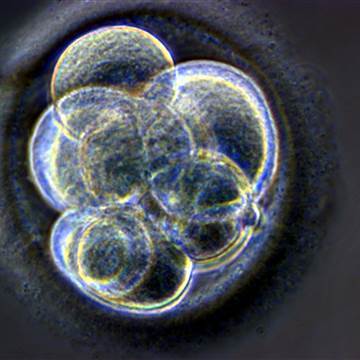It would be all right to permanently edit the genes of babies so long as researchers were doing it for the health of the children, and with proper oversight, a panel of experts said Tuesday.
But society needs to discuss what would constitute going too far — for instance, making designer babies that are stronger or more beautiful than they would naturally be, the panel appointed by the National Academy of Medicine said.


Right now, such genetic manipulation of human embryos isn’t known to be possible, and no one could do it in the U.S. The Food and Drug Administration would have to approve it and is barred by Congress from using its funding to consider anything that involved changing a human embryo.
It might be possible down the road, and labs in other countries might do it, the committee said in its report. Groups using private funding may also do what they like, although they could not offer treatments to people or tests involving humans in the U.S. without FDA approval.
And if someone finds a way to prevent disease using these techniques, there would be a clamor for it to be made available.
“However, genome editing to enhance traits or abilities beyond ordinary health raises concerns about whether the benefits can outweigh the risks, and about fairness if available only to some people,” said Alta Charo, a bioethicist at the University of Wisconsin who helped chair the panel.
Gene therapy is still experimental. The idea is to treat genetic disease by replacing faulty genes with healthy ones. But the technique is imprecise.
Related: Three-Parent Babies Are OK, Experts Say
Gene editing is a big step up from simple gene therapy. New techniques, such as one called CRISPR, allow scientists to precisely alter genes in a much more controlled way than before, offering the possibility that embryos could be changed not only to prevent the development of genetic diseases, but to prevent any resulting children from passing harmful traits to their own offspring.
“Using the technology to increase someone’s muscle strength to the extreme end of human capacity (or beyond) would almost certainly be considered enhancement.”
In 2015, Chinese scientists caused an uproar by trying to permanently edit the DNA of human embryos — creating genetic changes that could be passed from generation to generation.
One obvious question is whether labs might try to offer parents babies that are prettier, smarter or stronger than the genetic lottery would otherwise allow them to be. It’s not so easy: even eye color is not controlled by a single gene or even a few genes, and there are no known genes for intelligence.
Related: Three-Parent Babies Are an Ethical Choice
But a genetic disease such as muscular dystrophy is caused by easily measured genetic mutations, and it’s possible that finding a genetic cure for MD might lead to ways to make healthy babies more muscular, the panel said.
“And using the technology to increase someone’s muscle strength to the extreme end of human capacity (or beyond) would almost certainly be considered enhancement,” the report reads.
That’s when people might need to start thinking about how far is too far to go in improving children.
Related: Baby Born Using Three-Parent Technique
Tests for so-called germline editing for people would be ethically acceptable if there were no reasonable alternatives; if it was being done to prevent a serious disease or condition and if the genes being changed were clearly shown to cause the condition, the panel recommended.
Any change should resemble naturally occurring genetic sequences, not introduce some exotic change to DNA, the panel added. Data should be openly shared and there should be oversight, it added.
Some of the better known genetic diseases include muscular dystrophy, cystic fibrosis and the premature aging disease progeria, but there are dozens more.







